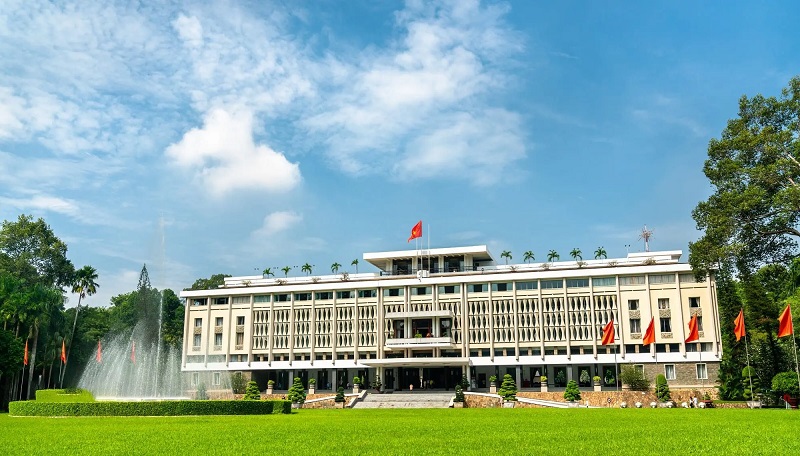Ho Chi Minh City Travel Guide: Best Places to Visit, Weather, Food & Travel Tips
Ho Chi Minh City—formerly known as Saigon—is Vietnam’s largest and most energetic metropolis. Once called “The Pearl of the Far East” during the French colonial era, the city continues to thrive with rapid development, vibrant nightlife, rich cultural influences, and a fast-paced lifestyle that captivates travelers from around the world.
In this comprehensive Ho Chi Minh City Travel Guide, you’ll discover why Saigon remains one of Southeast Asia’s most dynamic destinations. From history and architecture to street food and shopping, this guide will walk you through everything you need to know for planning a perfect trip.

What Makes Ho Chi Minh City Unique?
Saigon’s energy comes from its diversity and openness. The city is shaped by French colonial architecture, local traditions, bustling economic activity, and dense motorbike traffic. As you explore this Ho Chi Minh City Travel Guide, you’ll see how street vendors, skyscrapers, cafés, markets, and historic buildings blend to create a fascinating contrast between old and new.
Whether you’re drawn to culture, nightlife, food, or history, Ho Chi Minh City offers something for every traveler.
Weather in Ho Chi Minh City: Best Time to Visit
Ho Chi Minh City has a tropical climate with a warm, humid atmosphere throughout the year. Although locals refer to four seasons, the weather is essentially divided into dry and rainy periods.
Spring (March – May)
Temperature: 25–35°C
Warm, humid, occasional rain—good for sightseeing.
Summer (June – August)
Temperature: 30–37°C
Extremely hot and humid with unpredictable rain showers.
Autumn (September – November)
Temperature: 25–30°C
Comfortable weather—cooler and less humid.
Winter (December – February)
Temperature: 22–30°C
Coolest time of the year, dry and ideal for outdoor activities.
Best Time to Visit Ho Chi Minh City
This Ho Chi Minh City Travel Guide recommends visiting from December to April, during the dry season, when the weather is cooler and clearer.
How to Get to Ho Chi Minh City
This section of the Ho Chi Minh City Travel Guide covers transportation options based on comfort and budget.
Air Travel
Tan Son Nhat International Airport serves both domestic and international flights.
Price: $80–$100 depending on airlines and distance.
Bus
Budget-friendly option connecting major cities and neighboring countries.
Price: $5–$30
Train
The Reunification Express travels from Hanoi to Ho Chi Minh City with scenic views along the coast.
Price: $30–$100 depending on class.
How to Get Around Ho Chi Minh City
The transportation section of this Ho Chi Minh City Travel Guide highlights the easiest ways to explore the city.
Ride-Hailing Apps (Be / Grab)
The most convenient way to travel. Choose motorbike or car; prices are fixed and clear.
Taxi
Widely available, but choose reputable companies like Vinasun or Mai Linh to avoid overcharging.
Bus
Affordable option with many routes, though it can be complicated for first-time visitors.
Motorbike Rental
Suitable for experienced travelers. Be cautious of traffic and local road rules.
Walking
Ideal for exploring District 1, where attractions are close together.
What to Do in Ho Chi Minh City (Top Attractions)
Below are the most iconic attractions recommended in this Ho Chi Minh City Travel Guide.
Notre-Dame Cathedral Basilica of Saigon
Built between 1863 and 1880, this French colonial landmark features imported red bricks and beautiful stained-glass windows.

Ben Thanh Market
A bustling historical market offering souvenirs, clothing, local food, and Vietnamese spices. Perfect for bargaining and photography.

War Remnants Museum
One of the most impactful sites mentioned in this Ho Chi Minh City Travel Guide, featuring wartime photographs, artifacts, and military equipment.

Cu Chi Tunnels
An underground tunnel network used by the Viet Cong during the Vietnam War. Visitors can explore sections of the tunnels and learn about wartime history.

Bui Vien Walking Street
A popular nightlife spot with bars, clubs, restaurants, and street performances. This area is a highlight for young travelers.

Saigon Opera House (Municipal Theatre)
A beautifully preserved French colonial structure showcasing opera, ballet, and cultural performances.

Independence Palace (Reunification Palace)
A historic building symbolizing the end of the Vietnam War. Visitors can explore meeting rooms, war bunkers, and 1970s architecture.

What to Eat in Ho Chi Minh City
Food plays a major role in local culture, and no Ho Chi Minh City Travel Guide would be complete without mentioning its iconic dishes.
-
Pho – Vietnamese noodle soup with herbs and broth
-
Banh Mi – Crispy baguette with pork, pâté, and pickles
-
Goi Cuon – Fresh spring rolls served with peanut sauce
-
Banh Xeo – Savory crispy pancake
-
Com Tam – Broken rice with grilled pork
-
Bun Thit Nuong – Grilled pork over vermicelli
-
Hu Tieu – Light, flavorful noodle soup
-
Bo La Lot – Beef wrapped in betel leaves
-
Ca Kho To – Caramelized fish in clay pot
-
Banh Trang Nuong – “Vietnamese pizza” street snack
This Ho Chi Minh City Travel Guide highlights these dishes as must-try street foods for first-time visitors.
Where to Stay in Ho Chi Minh City
This Ho Chi Minh City Travel Guide provides accommodation recommendations across various budget levels.
5-Star Hotels
-
The Reverie Saigon – world-class luxury
-
Park Hyatt Saigon – elegant French-Vietnamese design
4-Star Hotels
-
Liberty Central Saigon Citypoint – modern and central
-
Hotel Nikko Saigon – spacious rooms, great service
3-Star Hotels
-
Alagon Zen Hotel & Spa – rooftop pool
-
Silverland Yen Hotel – boutique and stylish
Homestays
-
Christina’s Saigon – modern local feel
-
Mekong Rustic Saigon – traditional and cozy
Ho Chi Minh City Itinerary (4-Day Plan)
Here is the suggested schedule included in this Ho Chi Minh City Travel Guide:
Day 1
Notre-Dame Cathedral → Central Post Office → War Remnants Museum → Dinner in District 1
Day 2
Ben Thanh Market → Reunification Palace → Nguyen Hue Walking Street
Day 3
Cu Chi Tunnels → Binh Tay Market
Day 4
Thao Dien morning → Evening at Bui Vien Street
Ho Chi Minh City Travel Tips
-
Currency: Vietnamese Dong (VND). Cash is helpful for small purchases.
-
Language: English widely spoken in tourist areas.
-
Safety: Keep belongings secure; avoid using phones near traffic.
-
Dress Code: Lightweight clothing; dress modestly at temples.
If you need inspiration for your daily itinerary, here’s a helpful guide featuring the best things to do in Ho Chi Minh City for all types of travelers:
https://maverickjourneys.com/things-to-do-in-ho-chi-minh-city/










